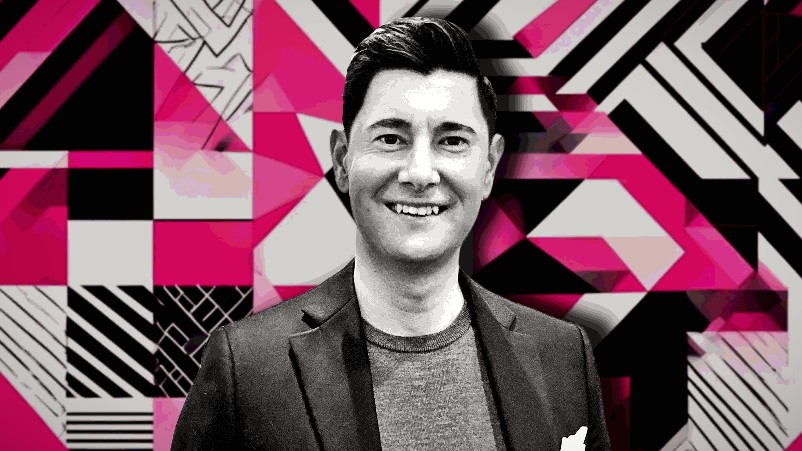Catch’s new CMO Jason Bagg: Former Macquarie investment banker drives online pureplay closer to Wesfarmers bricks and mortar, looks beyond price wars

Shift happening: CX drive and closer tie ups with stores like Kmart and Target are top of Bagg's to do list.
Catch’s new CMO and commercial boss Jason Bagg thinks the online pure-play can beat out bricks and mortar retailers as the first place Aussies look to for their retail needs. The former Macquarie investment banker is also trying to move away from price as the only differentiator while building stronger partnerships with Wesfarmers stablemates like Kmart and Target.
What you need to know:
- Jason Bagg joined Catch in 2020 as its Chief Commercial Officer, before adding the marketing function to his remit in July.
- Catch is now expanding into traditional bricks and mortar strategies such as Click & Collect in a bid for further growth.
- Bagg says the brand is focusing on customer experience and expanding product ranges via its partnership with Target in a bid to move away from solely discount-based positioning.
Catch's new Customer and Marketing Chief, Jason Bagg, intends to make the e-commerce player the start of everyday shopping journey. Meanwhile, he's attempting to move the brand away from price differentiation alone.
Bagg, a former Macquarie investment banker, was promoted to the CMO role in July, which he says was the result of a “natural evolution” between the commercial and marketing divisions at the Wesfarmers-owned retailer.
“Our customer loyalty, data and marketing functions had already begun working more closely together as we became more customer-centric in our strategy,” Bagg said. “It’s now one leadership team working to address the evolving opportunities across the customer journey.”
The online pureplay, which launched its first brand campaign last year, has traditionally been largely about price. But now it's trying to move beyond lowest price and improve experience to attract and retain a broader group of customers.
Bagg said this includes improved delivery options, including click & collect from 400 Target and Kmart stores and expanded product ranges.
Further tie-ups with Wesfarmers stablemates will continue, with Catch also selling inventory from brands such as Kmart’s homewares label Anko.
“Our ‘Everyday Aussies’ campaign really resonated with our new and existing customer base and also gave us confidence in where we were going creatively,” said Bagg.
“But that was at a brand level and did leave us wondering where we go next when it came to communicating with customers about other touch points.”
Bagg says this is where new omnichannel elements, such as Click & Collect, will play a growing role.
He says the introduction of a “whole new wave” of customer groups to e-commerce post-Covid has driven growth – but also expectation, as more shoppers look beyond price.
“The brand campaign certainly provided that initial trust and legitimacy but there is still a lot of work to do when addressing new expectations or needs that come with a fresh cohort of customers,” said Bagg.
“That’s why we need to introduce things like Click & Collect from trusted physical locations – to not only add a new function but emphasise that trust and deliver on the experience.”
Meanwhile, delivering to stores reduces the logistical load at a time when the e-commerce boom is starting to stretch supply chains.
CX shift
The push to become the first point of call for retail shopping will also see Catch shift its platform design and CX in line with changing ranges and customer feedback.
However, Bagg is adamant a significant overhaul is not required – more enhancement than transformation.
“I wouldn't say in the near term there's a significant change in strategy. The experience resonates with the customer base, but it will evolve to fit with product, range or experience improvements,” said Bagg.
“There also needs to be a shared focus on not just making those design or CX changes, but also how as a brand you communicate them to your audience. That’s where we are at currently.”
Media mix
In the immediate term, Bagg said Catch is unlikely to divert from its current channel mix strategy, broadly split 70:30 performance to brand. It's not planning to crimp any particular media channel just yet, but it is working on better optimising the brand aspect.
The strategy, put in place by ex-CMO Ryan Gracie, who left in May, saw heavy investment in TV and a cross-screen strategy, while Facebook played the dominant role in its performance channels.
Bagg says the next iteration of the brand campaign will continue to use that template but says there is “still room to grow”.
“We started with a really low base with a lot of the above the line spend, so we are still very much in the early stages of optimising that compared to our matured approach to performance,” said Bagg.
“But we certainly don’t feel as though we have reached a point of diminishing returns in those above the line channels and remain confident in the spend.
“There is still a strong resonance across the channels we remain in, but of course we have had to consider the dynamics brought about by the restrictions in different states.”


